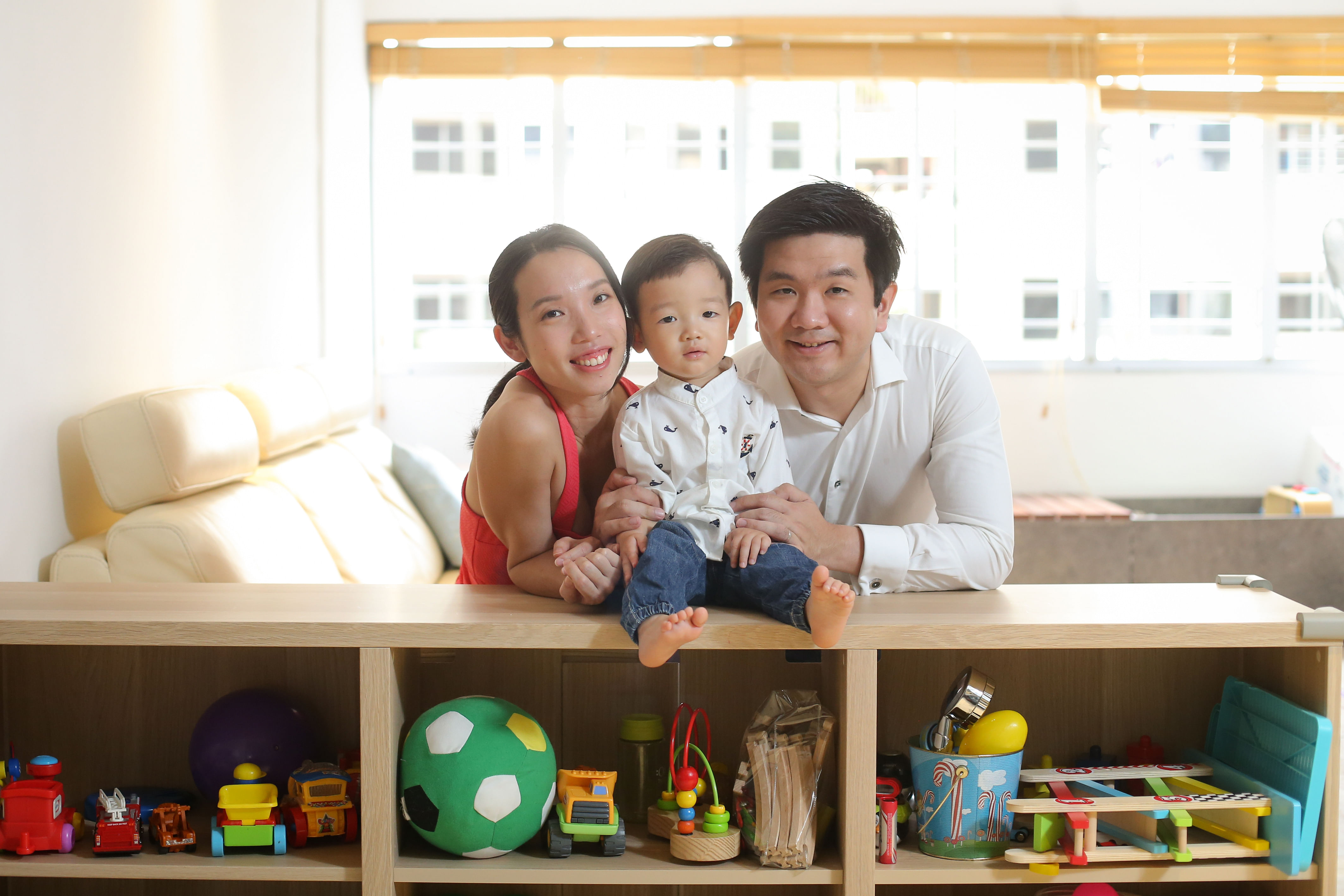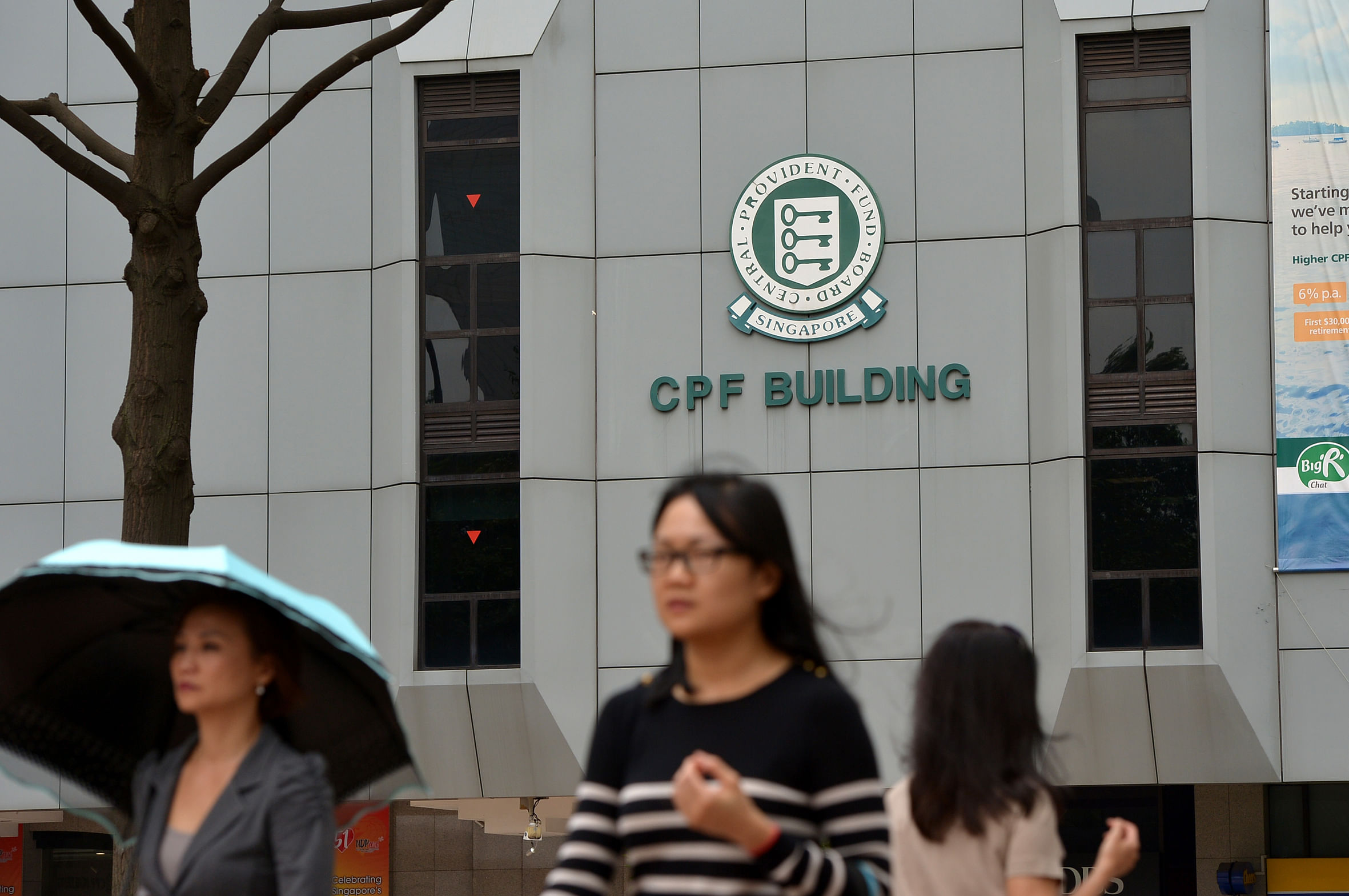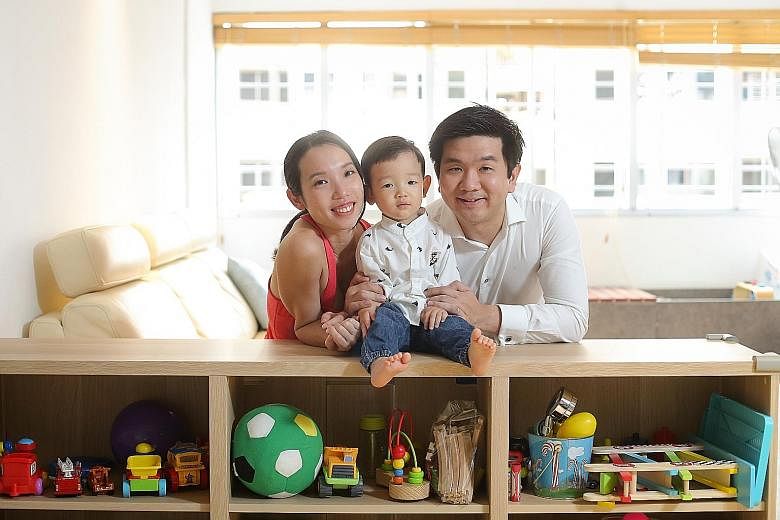Entrepreneur Wong Hong Ting began regularly transferring his Central Provident Fund (CPF) savings from his Ordinary Account to his Special Account last year in order to grow his retirement funds faster.
Mr Wong, 32, told The Sunday Times: "It is a no-brainer using CPF schemes - particularly the attractive 4 per cent interest rate for the Special Account compounded annually - to grow my safety net."
With interest rates so low in general, these rates are not to be sniffed at. Since 1998, CPF members have been able to transfer savings from their Ordinary Accounts to their Special Accounts so long as the total amount in their Special Accounts does not exceed the prevailing Full Retirement Sum (FRS), which now stands at $161,000.
The Ordinary Account offers a guaranteed annual interest rate of 2.5 per cent while the Special Account pays 4 per cent. The first $20,000 of Ordinary Account balances and $40,000 of Special Account balances earn 1 percentage point more.
From January 1 this year, members aged 55 and older have been earning up to 6 per cent for the first $30,000 in their Retirement Accounts.

Mr Wong owns software-development firm 2359 Media, which he set up with $12,000 in June 2009, a few months before he graduated from the National University of Singapore (NUS) with a degree in Quantitative Finance.
His firm now has 100 staff in its three offices, in Indonesia, Vietnam and Singapore. He aims to own more than one business in the near future and sees himself managing these enterprises for a long time.

He married in 2013. His wife, Ms Loo Hoey Lit, 31, is a homemaker and they have a 17-month-old son Zii Xiang. They live in a resale five-room HDB flat in Telok Blangah, which was bought for $700,000 in 2014. The flat is covered under the Home Protection insurance scheme. The couple plans to have four children.
FINANCIAL PROFILE
Mr Wong has about $70,000 in his CPF, of which $40,000 is in his Special Account, $25,000 is in Medisave and about $5,000 is in his Ordinary Account. Every quarter, he transfers a few thousand dollars - Ordinary Account savings and cash - to his Special Account. He plans to "max out" his Special Account until it reaches the prevailing FRS and do the same with his Medisave Account, before looking at other investments. He calls his CPF funds his retirement "safety net".

By age 45, Mr Wong aims to have enough money in his Special Account to grow to $1 million in his Retirement Account at age 65. His other objectives include ensuring sufficient funds for his children's education and to build a property portfolio. He believes he would require at least a minimum and conservative inflation-adjusted equivalent of $2,500 a month for both him and his wife in the future.
A saver, Mr Wong says it is his father - a retired NUS professor - who inculcated the habit of thrift in him in his youth.
He avoids impulsive spending and does not own a car. He also ensures that the credit limits of his cards remain intentionally low, despite the banks' repeated requests to increase them. His debt service ratio is low at 10 per cent.
Mr Wong has set aside an emergency fund that will fund a year of monthly expenses, and has $5,000 cash available for investments.
He has whole-life plans with sums assured of $300,000 each for himself and his wife, as well as an endowment plan for his son's education.
Like most CPF members, Mr Wong relies on his CPF savings to fund his home purchase, something that he now regrets as he believes he can grow his CPF funds faster by leaving them with the Board.
FINANCIAL EXPERT CHRISTOPHER TAN
CPF Advisory Panel member and Providend chief executive Christopher Tan says Mr Wong's action plan to top up his Special Account with Ordinary Account savings and cash is commendable.
Still, CPF members must be aware that the transfer is one way, meaning that they cannot reverse the decision after the top-ups.
The CPF top-ups also work well for Mr Wong as he is an entrepreneur.
Mr Tan says: "The good thing about having the CPF as a safety net for Mr Wong is that the monies are protected from creditors in the event of bankruptcy. This is especially important for entrepreneurs."
What also works in Mr Wong's favour is his long investment time horizon of 33 years. He also has sufficient emergency funds and a low debt level.
Mr Tan warns that members should be aware that CPF rules may change, which could affect the projected accumulated CPF savings. For example, the interest-rate floor of 2.5 per cent and 4 per cent may be removed.
"If the Special Account interest rate is pegged directly to the 10-year Singapore Government Securities plus 1 per cent, with the current floor rate of 4 per cent removed, the CPF interest rates would become lower and you might not be able to reach your financial goals," he adds.
Mr Tan adds that Mr Wong's insurance coverage may not be sufficient to provide the family with $30,000 annually and adjusted for inflation for at least the next 20 to 25 years, until his son becomes independent. This being so, he might want to increase his insurance coverage.
One prudent way is to use term insurance as it is the most cost-effective way to get cover.
"He needs cover only until he becomes financially independent, at age 65 latest. And if Mr Wong increases his insurance coverage, his ability to take risk will be higher," notes Mr Tan. Based on a risk profiling assessment, his willingness to take risk is also high.
Mr Tan also recommends that Mr Wong consider a comprehensive health plan for his family if he has not already done so. This would include a hospitalisation and surgical plan as well as critical illness cover.
USING CPF TO BUILD A SAFETY NET AT AGE 45
Mr Wong will continue to transfer 100 per cent of his Ordinary Account funds to his Special Account this year and the next. In addition, he will top up his Special Account with $3,000 cash monthly during the same period.
Mr Tan works out that when Mr Wong turns 34, his Special Account balance will exceed the prevailing FRS then, and he can no longer do any top-ups. This is based on the assumption that the FRS increases by 3 per cent per annum.
At age 45, his Ordinary Account balance would have grown to $235,000 and his Special Account would amount to $339,000.
Even if he no longer contributes to CPF at that age, Mr Tan estimates that Mr Wong's CPF balances will compound annually at 2.5 per cent (Ordinary Account) and 4 per cent (Special Account) to reach about $1 million at age 65, thus achieving his retirement safety-net objective.
However, it is likely that Mr Wong will continue to contribute into his CPF after age 45 and his safety net will be in excess of $1 million at age 65. Mr Tan assumes that Mr Wong's monthly salary is at least $6,000 and his annual wage supplement is one month.
To keep the calculations simple, Mr Tan ignores the tiered CPF interest rates for different amounts and bases his working on annualised compounding of all CPF balances, contributions and top-ups at the end of each year. He also does not take into consideration the flow of money from the Medisave Account into the Special or Ordinary Account when it hits the threshold.
INVESTMENTS FOR RETIREMENT PLANNING
Assuming that Mr Wong's monthly mortgage instalment is $2,000, Mr Tan advises that Mr Wong can now start using $2,000 out of his $5,000 investable cash to pay his mortgage, instead of using his retirement funds.
And by the age of 34, since he will no longer be topping up his Special Account, he will have available cash of $3,000 for investments.
Although Mr Wong's ability and willingness to take risk is high, Mr Tan is recommending a balanced exchange-traded funds (ETF) portfolio. This is because Mr Wong has a "low need" to take risk since he says he needs $1 million which he can achieve simply by growing his CPF.
Mr Tan says: "Mr Wong's biggest risk is already in his business, so I try to be more conservative for him in other investments. Besides, even with a lower risk/return investment, he can achieve more than what he wants as his safety net. Assuming a conservative annualised return of 5 per cent, his accumulated amount at age 65 from his ETF investment would be $2.6 million."
A balanced ETF portfolio would have an asset allocation of Singapore equities (20 per cent), global equities (40 per cent), emerging market equities (10 per cent) and Singapore bonds (30 per cent), according to Mr Tan.
Another investment avenue - using CPF savings - is the recently introduced Lifetime Retirement Investment Scheme (LRIS), mooted by the CPF Advisory Panel. The LRIS is an alternative, simplified investment option that will offer a small number of low-fee, well-diversified and passively managed funds. It is targeted at CPF members who do not have the financial expertise or time to select and monitor their investments.
"When the new LRIS is rolled out, Mr Wong can consider investing monies accumulated in his Ordinary Account for higher expected returns, if he is prepared to take some risk," said Mr Tan.
•The CPF Board is organising a series of five roadshows islandwide to help you understand the role your CPF plays in establishing a foundation for your retirement.
The first will be held on Aug 27 and 28 at Suntec City, West Atrium, from 11am to 6pm. Visit the roadshow to get tips from financial experts and discover your retirement personality.


